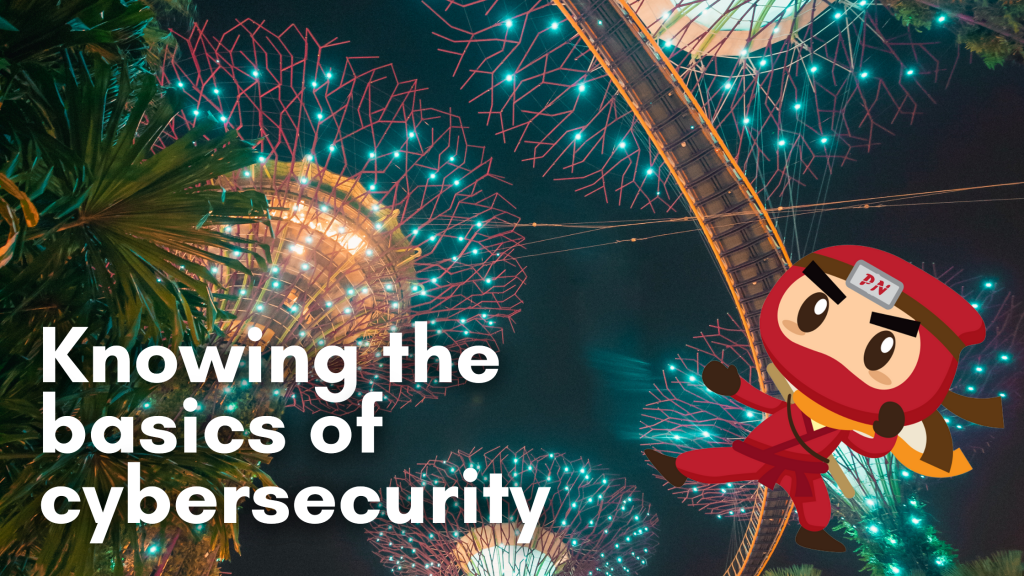KEEP IN TOUCH
Subscribe to our mailing list to get free tips on Data Protection and Cybersecurity updates weekly!



Attackers are now employing more complex methods to target systems. Individuals, small enterprises, and major organizations are all affected with this. As a result, all of these businesses, whether IT or non-IT, have recognized the necessity of cybersecurity and are working on implementing all available countermeasures to cyber attacks.
With cyber risks and hackers on the rise, corporations and their employees must prepare to cope with them. Because we prefer to link everything to the internet, we raise the likelihood of vulnerabilities, breaches, and defects. Passwords are no longer sufficient to safeguard a system and its contents. We all want to secure our personal and professional data, thus cybersecurity is something you should be aware of to ensure data security.
Also Read: PDPA compliance for real estate agencies

Cybersecurity refers to the processes and procedures used to secure sensitive data, computer systems, networks, and software applications against cyber assaults. Cyber assaults are a broad phrase that encompasses a wide range of issues, however some of the most common include:
Attacks are growing more imaginative and complex, with the potential to damage security and hacking systems. As a result, it is extremely difficult for any business or security analyst to overcome this barrier and fight back against these attacks.
Let’s take a short look at the different sorts of threats and assaults to better appreciate the necessity for cybersecurity procedures and practices.
Ransomware
Ransomware is a file encryption software application that encrypts the data on the target machine using a unique, powerful encryption algorithm. The Ransomware’s developers produce a unique decryption key for each of its victims and store it on a remote server. As a result, users cannot access their files using any program.
The creators of ransomware take advantage of this and demand a large ransom from the victims in order to release the decryption code or unlock the data. However, even after paying the ransom, there is no assurance that the data would be recovered.
Botnets Attacks
Botnets were originally intended to do certain jobs inside a group. It is described as a network or set of devices that are linked together to perform a task. However, this is now being utilized by bad actors and hackers to gain access to the network and insert harmful code or malware to impair its operation. Among the botnet assaults are:
Botnet assaults are typically directed against large-scale enterprises and organizations owing to their extensive data access. Hackers can use this approach to get control of several devices and compromise them for malicious purposes.

Social Engineering Attacks
Social engineering is currently a prevalent strategy used by cybercriminals to get sensitive information from users. It may deceive you by presenting appealing adverts, rewards, and large offers, and then requesting you to provide your personal and bank account information. All of the information you provide there is duplicated and used for financial fraud, identity theft, and other illegal activities.
Cryptocurrency Hijacking
Cryptocurrency theft is a recent element to the online world. As digital money and mining become more popular, so do cybercriminals. They have discovered an evil benefit in crypto-currency mining, which entails advanced computation to mine virtual currency such as Bitcoin, Ethereum, Monero, Litecoin, and others.
Phishing
Phishing is a fraudulent conduct that involves sending spam emails that appear to be from a legitimate source. Such emails feature a powerful subject line and attachments such as an invoice, job offers, large offers from respected shipping providers, or other critical communication from higher-ranking corporate leaders.
The most prevalent cyber assaults are phishing scams, which try to steal sensitive data such as login passwords, credit card numbers, bank account information, and so on. To avoid this, you should understand more about phishing email campaigns and how to avoid them. To avoid this attack, email filtering technologies can also be used.
Cyber-attacks on a large scale are inflicting havoc on many businesses and organizations, and there is no end in sight. Cyber-threats are on the rise, despite constant security research and updates. As a result, learning the principles of cybersecurity and its applications is beneficial.

Cybersecurity is a wide phrase that is founded on three key ideas known as “The CIA Triad.” It is made up of three components: confidentiality, integrity, and availability. This approach is intended to help the company with Cybersecurity policies in the field of Information Security.
Confidentiality
It specifies the guidelines for information access. Confidentiality refers to the safeguards put in place to prevent cyber attackers and hackers from gaining access to sensitive information. Personnel in an organization are granted or denied access to information based on its category by approving the appropriate people in a department. They are also well trained in the exchange of information and the use of strong passwords to secure their accounts.
They can alter how data is handled inside an organization to maintain data security. Two-factor authentication, data encryption, data categorization, biometric verification, and security tokens are all methods for ensuring secrecy.
Integrity
This ensures that the data is consistent, accurate, and reliable throughout time. It implies that data in transit should not be modified, altered, destroyed, or accessed unlawfully.
In order to secure an organization’s safety, certain precautions must be followed. The methods in place to control the data leak include file permissions and user access control. In addition, methods and technology should be put in place to identify any changes or breaches in the data. A checksum, and even a cryptographic checksum, are used by several organizations to validate the integrity of data.
Backups should be provided on a regular basis to deal with data loss, unintended deletion, or even cyberattacks. Cloud backups are currently the most trustworthy choice.
Availability
All relevant components, including as hardware, software, networks, devices, and security equipment, should be maintained and improved. This will guarantee that the system runs smoothly and that data is accessible without interruption. Also, sufficient bandwidth is provided to ensure continual communication between the components.
It also includes the purchase of additional security equipment in the case of a crisis or congestion. To deal with DoS assaults, utilities such as firewalls, disaster recovery plans, proxy servers, and a suitable backup solution should be used. For a successful strategy, it should go through numerous levels of security to guarantee that every component of Cybersecurity is protected. Specifically, computers, hardware systems, networks, software applications, and shared data.
To achieve a successful cybersecurity strategy in a business, the people, procedures, computers, networks, and technology of an organization, large or small, should all be held equally accountable. It is quite easy to withstand the difficult cyber danger and attacks if all components complement each other.